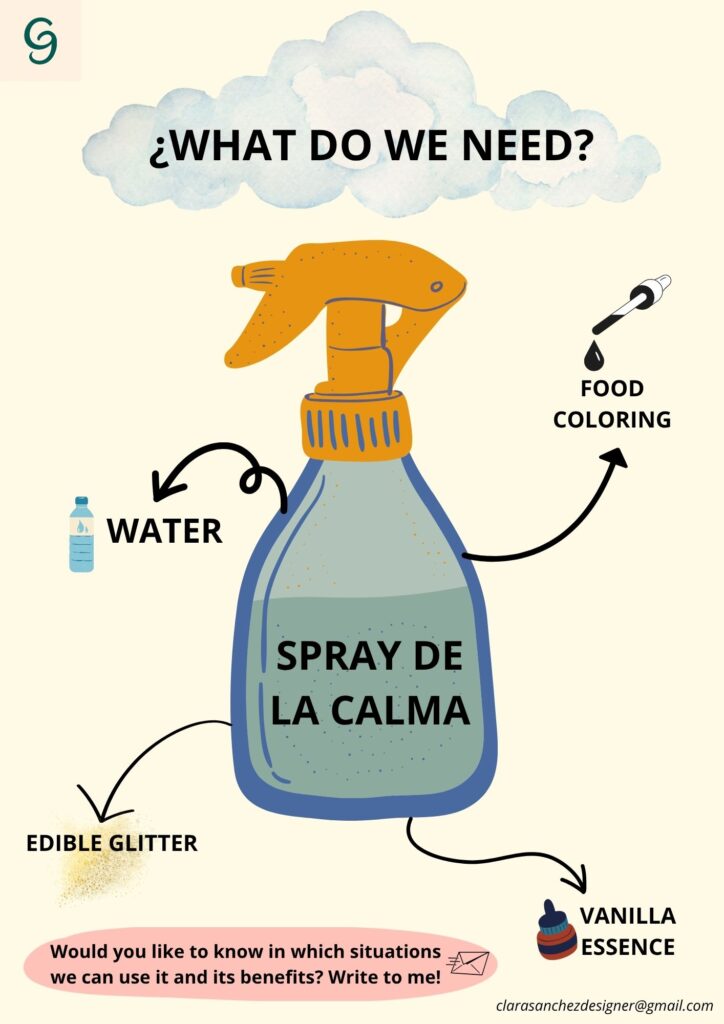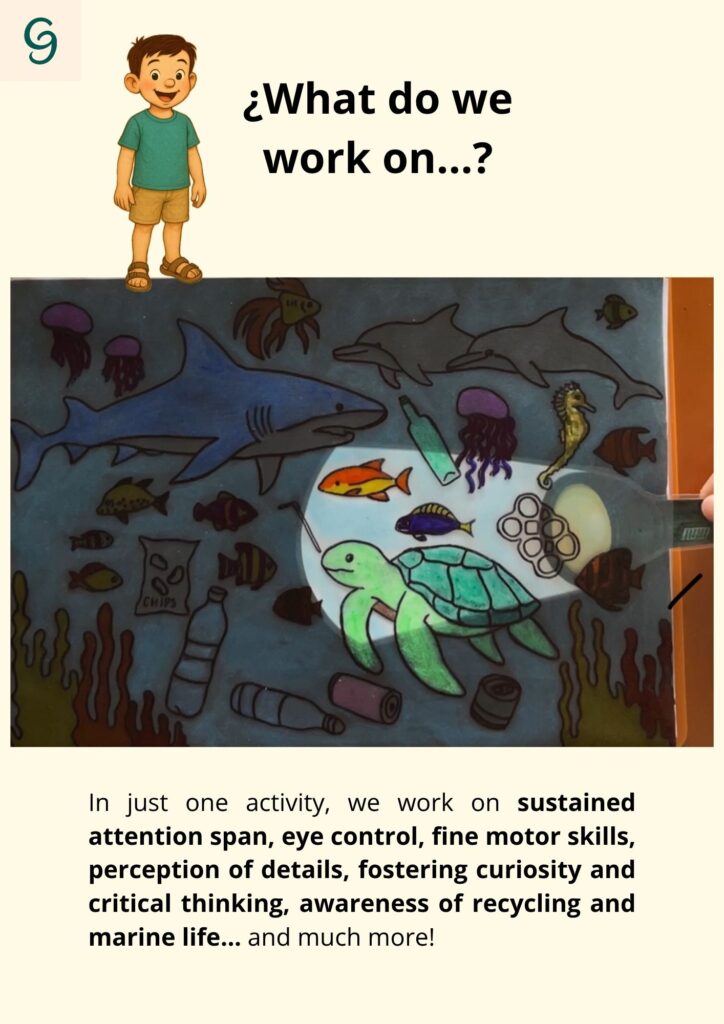
The start of the school year is an exciting time for everyone: new beginnings, brand new materials and endless new learning opportunities full of excitement. At the same time, for some children it can also be a period of anxiety, uncertainty, insecurity and confusion.
I am a teacher and have been able to accompany, guide and support children of different ages and characteristics, including students diagnosed with autism spectrum disorder. I have worked both in Spain and in Switzerland, where I lived and worked for three years. There, I learned German, worked with a new school curriculum and learned new methodologies and resources in a totally immersive way. I am currently dedicated to the creation and comprehensive design of teaching materials, educational projects and personalized resources, always adapted to the unique characteristics and needs of each learner.
This experience has shown me the importance of being present at every stage, especially at the beginning of the school year, when everything is new and challenging for many children.
New beginnings may not be easy, but with preparation, empathy and specific strategies, we can make their transition to the classroom much more friendly and positive. Here are some tips:
1. Before the first day: lay the groundwork
Learn about your student
Establishing close and collaborative communication with parents or guardians is essential to getting to know the student in depth and being able to support them in a respectful and effective manner. Taking an interest in their life beyond the classroom will give you valuable insights into how to create a safer, more predictable and meaningful educational environment.
You can ask questions that will help you better understand their personality, interests, needs and usual supports. Some suggestions:
- What do they like or what motivates them?
- What are their favorite activities or games?
- Are there any specific topics that interest them? Are there any aspects of daily life that they find more appealing (mealtimes, reading time, etc.)?
- Are there any topics that they dislike or find unsettling?
- What situations tend to cause them anxiety/meltdowns?
- Do they follow specific routines?
- What supports or adaptations do they use at home or in therapy? When do they use these supports?
- What strategies do you use at home for crisis situations?
- Do they have any objects that bring them comfort?
- Do they know/have any friends who will be with them in the classroom?
- Do they have sensory hypersensitivity or hyposensitivity? Do they use any items or strategies (such as headphones, sunglasses, clothing with specific textures, etc.) to manage this?
- Do they follow a specific eating routine or have sensitivities to certain foods (textures, tastes, smells)?
- Do they have preferences or difficulties related to lighting, such as bright lights or open windows?
- Do they participate in any activities outside of school hours (sports, music, etc.)?
Also speak with the child’s previous teachers, not just about curricular adaptations but also to understand how the child develops in the classroom and what aspects promote their well-being, inclusion and enjoyment of learning.
- What are their learning preferences?
- In what areas do they need more support?
- What are their timings? Attention span? Rest time?
- Are there specific times of the day when they tend to feel more tired?
- How have social interactions and emotions been worked on previously?
- What resources have worked best for them and which ones did they enjoy the most?
- Do they have any preferences regarding classroom layout?
Don’t expect to have all the answers, but show your willingness to learn and collaborate; that attitude makes all the difference from the start.
Invite the family for a classroom visit
Invite families to visit the classroom a few days before the start of school. This experience allows students to explore the space in a calm environment, without the hustle and bustle of the first day, which promotes a more confident and positive adaptation. During the visit, they will be able to:
- Find their desk and chair.
- Familiarise themselves with the general layout of the classroom.
- Identify where the different materials and resources are located: tablets, pencils, cardboard, paper, folders, dictionaries, calculators, etc.
- Know where to leave their backpack and jacket.
- Identify their designated spot in the classroom.
- Know which classmates will be nearby and where their support teacher will sit.
- Observe what the windows and lights are like and where they are turned on.
- Locate the bathroom.
- Discover the quiet corner.
- Know where to line up and where their place in the line will be.
- Learn the way to the classroom, the playground and other areas of the school.
- Explore and play freely with some of the materials, games or resources they will use during the course.
- Get to know you in a relaxed and unrushed setting.
Use visual supports
Prepare visual materials that you can send home:
- A weekly visual timetable with pictograms that they can print out and take to school every day.
- Include the materials they need to take to each class (books, pencil case, etc.) and clothing (e.g. wear a tracksuit on PE days).
- A detailed visual timetable for the first and second days of class.
- Warning of any changes to the timetable that will be followed throughout the course.
- Including images or explanations of some of the games, materials or routines that will be used during those first two days.
These aids not only facilitate understanding of what will happen, but also allow the child to arrive in the classroom with a sense of familiarity and confidence from the very beginning.
2. Prepare Adapted and Accessible Materials in Advance
One of the most important steps we can take before the start of the course is to prepare teaching materials adapted to the characteristics and needs of our autistic student. This involves planning with intention, taking into account how that child best accesses information.
Why are these materials essential?
Students on the autism spectrum may process information differently. Having adapted materials facilitates their understanding, reduces anxiety and increases their autonomy, allowing them to participate in classroom activities meaningfully.
Most importantly, these materials truly promote their holistic development and well-being, as well as their enjoyment of the learning process.
Adapting materials and creating inclusive resources takes time and is not an easy task, but I can help you.
https://clarasanchezdesigner.wixsite.com/clara-s/en

I develop inclusive materials, resources and projects that are truly adapted to the needs and characteristics of our students, focusing on comprehensive development and creating a solid foundation that fosters their autonomy and integration into society.
I work in collaboration with schools, teachers, families and other professionals. If you need support or are looking for personalized resources, please do not hesitate to contact me. I am here to accompany you on this journey.
You can learn more about my work, my approach and view examples here: https://clarasanchezdesigner.wixsite.com/clara-s/en

3. Be Flexible and Cultivate an Inclusive Community
There will be difficult days, adjustments along the way and many questions without immediate answers, but there will also be moments of deep connection, lots of learning and celebrations of small (or big) achievements.
Teach empathy
Without pointing fingers or labelling, you can introduce stories, activities and materials that encourage reflection on empathy and promote diversity from a respectful and inclusive perspective. Some key messages you can work on with the group are:
- We all learn in different ways, and that’s okay.
- There are many ways to communicate and express ourselves, and they are all valid.
- No two people are alike: our differences enrich us and make growing together a valuable experience.
- Respecting others and treating them as we would like to be treated is an essential basis for living together.
Resources like LovingPiecesBooks are a great starting point for addressing these themes in a meaningful and accessible way.
Conveying these values benefits not only autistic students, but the entire group: when we educate about diversity, we show respect, empathy and understanding. If we all thought the same, acted the same or saw the world in the same way… it would be tremendously boring!
Set an example with your attitude
The way you treat autistic students will be the most powerful guide for your pupils. If you listen to them, respect their pace and celebrate their progress, they will do the same.
Conclusion
We all need to feel heard, understood and valued, that’s where true inclusion begins. Don’t ignore or avoid, but adapt, connect and build bridges.
It all starts with the first step, the one we take when we show interest in their characteristics and look for the best way to share knowledge, guide them in their development and find excitement and happiness in every step we take together.
I wish you a great start to the school year! Warm regards,
Clara
Website: https://clarasanchezdesigner.wixsite.com/clara-s/en
Email: clarasanchezdesigner@gmail.com

